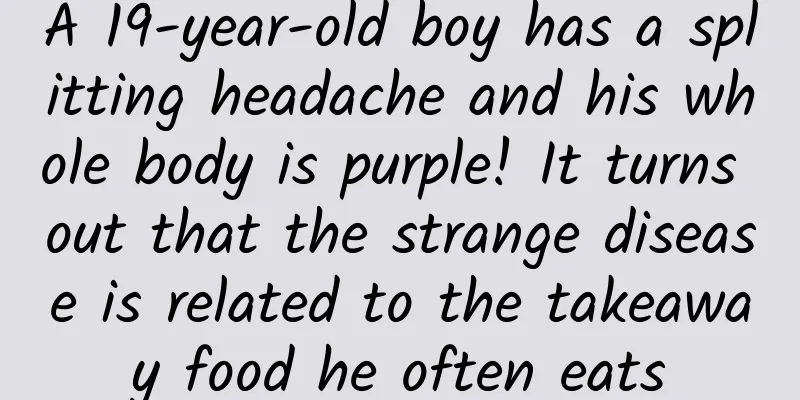[Oral Health Science Series 4] Prevention, Treatment and Management of Dental Trauma
![[Oral Health Science Series 4] Prevention, Treatment and Management of Dental Trauma](/upload/images/67f1dc2ae4d0a.webp)
|
Being naughty and active is the nature of children. During the stage when children are most curious, their naughty and active nature drives them to boldly contact the outside world. In this process, children will inevitably experience some bumps and accidentally injure their teeth. After an accident, as a protective umbrella for children, parents need to understand the knowledge of dental trauma prevention and treatment and avoid common misunderstandings about dental trauma to avoid making the injured teeth "worse". Common misunderstandings about dental trauma Myth 1: Baby teeth will be replaced sooner or later, so don’t worry if they get damaged Although deciduous teeth will be replaced by permanent teeth, parents should also pay attention to deciduous tooth trauma. After deciduous tooth trauma occurs, it may cause infection of the dental pulp and periodontal tissues, directly or indirectly affecting the development of the permanent tooth germs below the deciduous teeth, thereby causing eruption disorders or developmental deformities of the secondary permanent teeth. In addition, when deciduous tooth trauma causes teeth to become loose and fall out, children should be prevented from swallowing or aspirating them by mistake, and the gaps between missing teeth should be further managed to prevent affecting subsequent tooth replacement. Myth 2: Even though the child broke a tooth, the tooth doesn’t look any different, so it’s OK not to see a doctor. After a tooth is hit by a huge external force, the tooth may not show signs of damage or fracture. Even if the tooth looks intact, you still need to go to the hospital for treatment in time, because in this case, the tooth may have "internal injuries", which is professionally described as "tooth concussion". At this time, the hard tissue of the tooth is intact, but the internal dental nerve may be in a "shock" state, temporarily losing response to cold and hot stimuli. After tooth concussion occurs, regular follow-up visits are required to observe nerve vitality. If the nerve is inactivated and necrotic, appropriate treatment is required depending on the situation. Even if there is no visible damage to the teeth, the periodontal supporting tissues will become edematous and congested after trauma. Children may feel that their teeth are "floating". Seeking medical attention as soon as possible and performing small adjustments to the traumatized teeth to avoid occlusal contact after the injury can reduce the burden on the teeth and greatly help the dental nerve recover from the "shock" state as soon as possible. Myth 3: If a child breaks a tooth, the broken tooth or fragments are useless. Tooth dislocation and permanent tooth crown fracture are the most common. The front teeth are located at the front of the dental arch and are often the most affected when they are injured. Fractured teeth not only affect the appearance, but also affect the pronunciation of children. There are three types of tooth fractures: crown fracture, root fracture, and crown-root fracture . When the crown of a tooth is broken, the tooth fragments need to be collected and sent to the doctor together with the child. Generally, the broken fragments can be re-bonded to restore the tooth shape; if the tooth fragments are lost, the doctor can polish the sharp defect edges, desensitize, fill the teeth, perform endodontic treatment, etc. according to the degree of tooth defect, and observe regularly after the operation; when the root of the tooth is broken or the crown and root are broken, it is decided to extract the affected tooth or perform endodontic treatment to save the damaged tooth according to the location of the fracture. Tooth dislocation can be divided into several types: partial dislocation (lateral dislocation, extrusive dislocation, impacted dislocation) and complete dislocation. When a tooth is dislocated, you need to seek medical attention immediately. After examination by a professional doctor, different treatments will be given according to different situations. The most important point to note is that when the tooth is completely dislocated, the shorter the dislocation time and the proper early treatment after the dislocation will increase the success rate of tooth replantation. Therefore, when a child's tooth is completely dislocated, parents can perform the following first aid treatments. 01 Pick up After a tooth falls out of the alveolar socket, first pick up the tooth. When picking it up, pinch the crown end of the tooth with your fingers and try not to touch the root to avoid contaminating the root surface and affecting the replantation effect. 02 Rush If a tooth has fallen to the ground and is contaminated, it should be rinsed with saline or milk on the spot. If the above conditions are not available on site, you can gently rinse it under clean water to remove blood and dirt on the surface of the tooth to reduce the chance of infection. Remember not to scrub it. 03 Reset The cleaned tooth should be replaced back into the socket as soon as possible. 04 Soak/Contain If the tooth cannot be repositioned immediately, if conditions permit, place the dislocated tooth in a cup of milk or saline; if conditions do not permit, let the child hold the dislocated tooth under the tongue to keep the tooth moist and avoid drying it out! ! 05 Seek medical attention early After completing the above first aid, take your child to the hospital as soon as possible for further professional treatment. Prevention of dental trauma It is better to prepare for a rainy day before an accident than to mend the fence after it has happened. While parents should keep in mind the above knowledge about dental injuries, they should also try their best to prevent dental injuries from happening at all stages of their children's growth. When children aged 1 to 2 years old are practicing walking, avoid slippery floors, attach anti-collision strips to sharp corners of tables and cabinets, and prevent children from climbing unstable furniture and falling. For preschool children and older children, they should be educated to pay attention to self-protection. They should try not to chase or fight when playing games. When doing sports activities such as playing ball and skateboarding, those who have the conditions can wear protective equipment such as helmets and mouth guards. In addition, dentofacial deformities such as buck teeth will also increase the risk of tooth fracture and dislocation. Therefore, parents should pay special attention to children's dentofacial deformities such as malocclusion and maxillofacial protrusion. The popular science content of this platform has been funded by the China Association for Science and Technology's Science Popularization Department's 2022 National Science Literacy Action Project "National Society Science Popularization Capacity Improvement Project-Rehabilitation Science Popularization Service Capacity Improvement Action Plan" Author: Mo Lanqing, Luo Wenhai, Lu Chenghui Reviewed by: Wei Jie, Jiang Xinxiang, Tang Guoyao Unit: Stomatological Hospital Affiliated to Guilin Medical College, Department of Stomatology, Xinhua Hospital Affiliated to Shanghai Jiao Tong University School of Medicine, National Clinical Research Center for Oral Diseases, Oral Disease Prevention and Rehabilitation Professional Committee of Chinese Rehabilitation Medicine Association, 2021 High-level Local University Collaborative Innovation Team of Shanghai Jiao Tong University School of Medicine |
<<: [Oral Health Science Series 3] Prevention and Treatment of Overbite
>>: [Oral Health Science Series 5] Make the plaque in the gaps between teeth disappear
Recommend
Will I definitely not have my period if I'm pregnant?
Menstruation is one of the ways for women to clea...
Can I have an abortion if I suffer from premature ventricular beats?
Abortion, killing one's own unborn child in a...
Will a ruptured ovarian cyst heal on its own?
The appearance of cysts in female ovaries is one ...
How to eat sesame paste healthily? Is sesame paste better or oatmeal?
Oatmeal contains all kinds of minerals and vitami...
Can pregnant women eat fruit?
Fruits and vegetables are very good and have many...
How many days can I go out during the confinement period?
The month after miscarriage is called the short c...
Where to get cervical cancer vaccine in China
The HPV vaccine has attracted widespread attentio...
Is there any odor down there in the early stages of cervical cancer?
Gynecological diseases are quite harmful to women...
What to do if you are weak during pregnancy
When a woman becomes pregnant, her body will unde...
The benefits of drinking more water every day for women
Many female friends who pursue beauty often have ...
Can I give birth naturally if my cervix is hard? Why can't I open my cervix?
When giving birth, the cervix needs to be fully o...
What to do if you have a cold or cough during late pregnancy
Some pregnant women suffer from colds and coughs ...
What is the best way for women to lose weight?
Summer is coming again, and many female friends h...
Can I eat black beans during confinement?
Black beans are a green plant of the genus Glycin...
How to treat postpartum headaches?
How to treat postpartum headaches? Here are some ...









